- Do you dread planning a novel, or love it? Plotters and pantsers often have different perspectives—but which one are you?
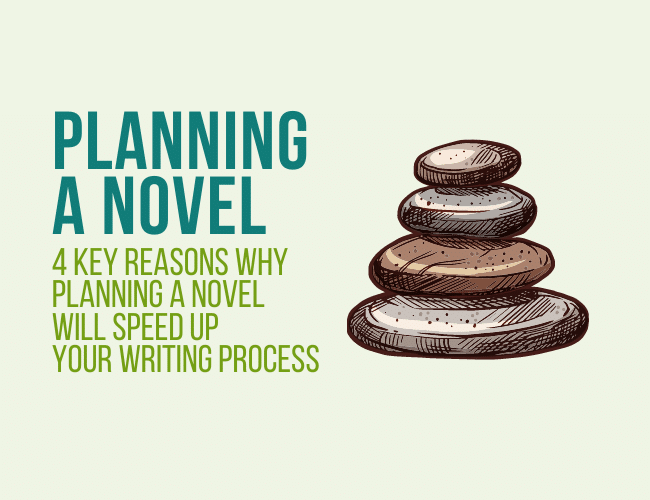
Declaring yourself a plotter or pantser is like being asked to pick a house in Harry Potter's Hogwarts: are you House Planner or House Pantser? Which one?
In your writing journey, I can guarantee you'll connect with writers from both “houses,” and I'm not sure there will ever be a definitive answer to one team being better than the other.
However, I do think there are extreme benefits to planning a novel. If nothing else, there are four key reasons why planning a novel will speed up your writing process when writing your first draft—and next drafts.
This post is from J.D. Edwin's blog series How to Write Faster. In this series, J.D. Edwin teaches writers how to write a fast first draft—in six weeks. Each post covers important writing strategies and techniques to help you do this, which you can read about in this introduction post.
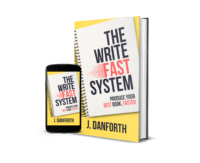 If you've ever been stuck with an unfinished project, unable to find the time or will to finish, you don't need more willpower, you need a system. Download my book The Write Fast System and start finishing your books today!
If you've ever been stuck with an unfinished project, unable to find the time or will to finish, you don't need more willpower, you need a system. Download my book The Write Fast System and start finishing your books today!
I Used to Be a Pantser, Too
This article is about planning, but first, let me make it clear that I was once the ultimate pantser. I finished NaNoWriMo a total of five times just pantsing. I dove in, no planning stage, and just wrote from a basic idea. Those NaNoWriMo sessions produced three 50K-word novellas and parts of two other books.
I felt proud to have completed those books, but at the same time, I had mixed feelings every time I read them.
They each started with a solid story idea, but usually after a few thousand words, I started to lose control of the story. What followed was a desperate attempt to steer the plot back on course, rather like herding cats. By the time I reached the end of each book, I looked back at the bumpy, crooked path that got me there and felt rather unsatisfied.
And yet, I was resistant to planning.
It felt terribly restricting to lay out an entire book and have to follow it step by step. Because of this, I went on pantsing for a long time.
It wasn't until a few years ago that I realized the value of a planning process and the efficiency it brought to my writing.
Not only that, I learned how to do it correctly—a method that motivated my creativity and ability to finish stories that had once been just an initial idea. I was proud of creative process, and felt the stories come to life instead of flattened.
Planning Brings Freedom
Contrary to my initial belief about outlining a book, I've now realized that planning is not restricting at all. In fact, planning liberates writers. It gives us freedom to explore the story and character (and cast of characters!) without worrying where the next plot point is going to come from.
When I wrote without planning—pantsing every word—I actually found myself feeling more tied down. There was always a nagging worry in the back of my mind:
What if I write myself into a corner?
What if I end the story before I hit my word count?
What if I realize I need a subplot but I'm too far in to develop one?
Plotting eliminates all these questions and more, because planning will let you see the book as a whole, recognize problems early, and make adjustements before you have fifty thousand words already down on paper.
Let's take a look at four key reasons you should plot your novel, and how these can help you speed up your writing while meeting your ultimate goal: writing a draft of a story that works.
4 Key Reasons Planning a Novel Will Benefit Your Writing Process
There are many reasons to plan a book, and planning may look different for each person. However, no matter the planning method, certain principles remain the same.
In this section, I will go into detail about the main reasons planning a book is a smart strategy, and how it can make your life easier as an author.
1. Get a Holistic View of Your Story
The word “holistic” is a bit of a buzzword these days. In practical terms, “holistic” means to look at the pieces of something while considering one one's role as part of a whole.
When planning, it's not just about the inciting incident, the backstory, the central conflict, the climax, the character profiles or development, and any major details that advance the plot. It's also important to ask, “How does this detail fit into the story and affect the rest of the pieces?”
A pantsing writer may only handle one detail at a time, which makes seeing its connection to the whole story more difficult. At least until the editing phase.
Consider a chapter where the backstory is introduced for the main character, maybe something necessary to create a realistic character.
A pantser may dive right in with a fleshed out history: Maybe the hero lost their parents. They tried to keep the family business going but failed, and now they're trying to get into a high-risk venture to save the business.
Diving into a scene like this can go wrong in several ways. The biggest of which is that not everything you write might be applicable. It's easy to write about a series of events in detail that you only need in snippets for the larger story.
The inverse problem could also happen—something is left out that you would need to cover later. This causes confusion. Maybe after a few chapters, the writer realizes that the character's brother is the real reason their family business failed, except they've already established that they and the brother were estranged after the death of their parents.
Now the writer needs to go back and fix the backstory, and possibly a myriad of minor references throughout the story where they reference the main character's relationship with said brother.
This is an editing nightmare.
By this point, a good amount of the book might already be written, so the only options are either revise or face major reworking later on—and fixing plot holes later is always harder than getting the big plot points right the first time.
However, if you were planning this scene, you would simply write down the following:
Chapter 2: Backstory
- MC lost parents
- MC becomes estranged from brother
- MC reflects on how they lost the family shop after failing to keep major contracts
While you're planning forward, making quick notes like this on scenes to come, the nature of the relationship between the MC and her brother becomes more apparent. No problem. Go back to the scene, cross that second line out, and change it:
MC becomes estranged from brother becomes:
- MC and brother try to run the family shop together
By doing this, the plot hole is fixed before the writing even starts.
Isn't that a relief?
2. Avoid Writer’s Block
We all have trouble getting started sometimes, even if we have a rough idea as we begin our writing time.
Call it writer's block, call it procrastination, call it fear. At the end of the day, all of us have made up an excuse that kept us from writing. There's no avoiding it.
I used to think that when writer's block came, I had no choice but to set aside my writing and wait it out. This ultimately resulted in a lot of wasted hours and days where no actual writing got done—until I finally realized the reason why I suffered from writer's block:
Writer's block happens when I don't know what to write.
Maybe it's hard to know where to take the story from a certain point. Maybe there are too many (or not enough) ways to wrap up a key scene. Maybe a minor character has developed in a far too unexpected of a way and now has a major character arc.
Or maybe you just sit down, stare at that blank screen, and have no idea what comes next.
Fortunately, when a book is planned before writing starts, writer's block can be easily avoided. I actually can't remember the last time I had writer's block, because whenever I sat down to write, all I had to do was refer to my plan. When I did, I knew exactly what I needed to write that day.
How can you plan your scenes, chapters, and novel?
How can you plan enough to keep you moving forward when you sit down each day? Some people like to use a three-act structure. Others like a five-act structure. Some use the Write Structure.
You can keep it even simpler though, if those feel overwhelming as you begin.
Start by dividing the plan into chapters and scenes. They do not have to be a long detailed outline. Just a list of tasks for a scene like in the previous section is enough.
When you write, if you are stuck in the middle of a scene, take a look at what the next scene is. How do your characters get to that scene? Consider this, and then come up with plot events that get that character to that place.
Remember, the first draft is supposed to be ugly and messy. So long as it moves through scene by scene and carries on the story, it's fulfilled its purpose.
How can you start your novel plan? Play with the plot.
To do this, I recommend the writing software tool Hiveword created by James Scott Bell, which includes a handy scene planner that allows you to look at the scenes of your story like little flashcards or post-it notes. You can then rearrange them with drag and drop. The tool is simpler and more intuitive to use (not to mention cheaper) than larger tools like Scrivener, and it allows you to set up a quick few scenes that you rearrange as you plan.
This is the scene list for my upcoming novel, Headspace. It all started with these forty-four poorly named and briefly planned scenes.
The majority of the character names changed by the end of writing the first draft. Several of these scenes were scrapped before I even got to their part in the book, and the details within each scene were general and vague. The plan still helped.
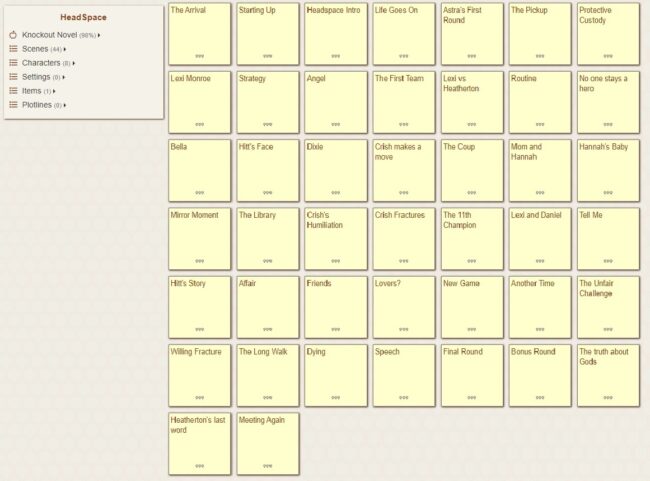
We will go into the details of scene planning in a later post in this series. But, I wanted to share this because this messy list of scenes helped me finish my first draft in six block-free weeks, even if the final product looked nothing like it.
3. Focus on What’s Important
It's easy to lose sight of what is important when pantsing.
A scene might begin with the beautiful setting, but after two pages of lovely descriptions about the outside of a sacred temple (flexing those creative writing muscles!), it becomes obvious that it's actually not important because most of the scene takes place inside the building.
Perhaps a side character is introduced. This person is mentioned in the briefest of manner, seemingly having no importance to the story. Later, their role turns out to be much bigger than originally thought and their introduction was completely unbefitting of their part. Why is this a problem?
This not only slows down the writing process, but also introduces the problem of figuring out a whole new way to include and describe that character in the book.
Of course, it's imposible to plan for every eventuality, but it is possible to plan for most of them. Start your planning by asking the following questions:
- What is the central message of my story?
- Who are the main characters and why do they do what they do?
- What are the important locations that the story takes place in?
- What events/objects/interactions do I really want my readers to focus on?
When writing Headspace, I had no idea what the theme would be until I was halfway through planning. In the book, this is when another character accuses the main character, Astra, of having no big vision.
In this conversation, I realized that Astra must admit to the other person, as well as to herself, that she only wants one simple thing—to go home. Or, more accurately, to get her old life back, even if it's becoming increasingly impossible by the day. Thus, the theme of the book—and the series—was born out of her desire. The theme of home.
This discovery was a product of me asking the aforementioned four questions, and also why I encourage you to do the same when writing your first draft.
Once you have these questions answered, you will have a much better view of what you should focus on—and what you shouldn't. This will save you time when you're trying to figure out exactly how important it is to describe that pothole your character drives over on a rainy day.
Or even better, it will prevent you from spending hours writing that scene with that pothole—before realizing it's better tossed than kept.
4. Planning is Fun
Honestly, I had a hard time believing this myself until I really got the hang of planning. But really? Planning can be really fun. It allows you to explore all the scenarios and opportunities without having to deal with pages and pages of rewrites.
Imagine a major character at a crossroads. Turn left for good, turn right for evil. Up for adventure. Down for home. Which way do they go?
If the author was pantsing, they would have to pick one, follow it, and see where it ultimately leads. This could wind up being a brilliant book, or it could lead to fifty pages of useless material when they realize they would've preferred to take a different way.
But not so in planning. In planning, it's easy to list out every possibility, follow every whim and feel out every thread. It's possible to try out the wildest storylines and test out ridiculous theories just to see how they pan out. And since you don't write them until after you've planned, you won't waste time rewriting scenes if, in advance, you see that they won't work out.
View planning a novel as a time to explore and indulge in all the silly whims you have about your book. Get your ideas out, and then decide which ones make the pages.
After all, what happens in the book plan stays in the book plan.
Six Elements of Plot Will Help You Plan Your Book
Perhaps you're impatient to start planning your book before we get into the nitty gritty of the process. For those in a rush, you can use two simple steps.
- Reference the Six Elements of Plot and think about how each one looks in your book.
- Make a list of of three to five “story events” that could take place in your book to drive each element.
Ask yourself:
- What happens in the inciting incident?
- Who is involved?
- How do they feel about it?
- What is the dilemma?
- What is the choice your character must make? Is it between two good things or two bad things?
Refer to the first reason on why planning a novel is worth your time—about how a holistic view of your book can help you plan a novel—for an example of how to list out story events.
Don't overthink it. Keep it simple. Think: this is what will happen in my book.
When you're finished, you should have a list of twenty to thirty different events, and that's the very first starting point of planning.
Don't Knock Planning Until You've Tried It
There is value in pantsing. In a later post, we will go into the different ways that you can plan your book while still retaining some level of pantsing. But for now, give planning a try. You might like it!
It's easy to think of planning a novel as a monumental task, especially since there are so many different methods of story planning tools out there.
Let me reassure you, you only need one method of planning a novel: the one that works for you.
If you are following this blog series, you will be given all the methods and tips for how I plan my books. You may tweak and change its parts however you like. Once you find what fits your method, you may find that planning is your new favorite first draft and writing strategy.
And remember—planning a novel before writing one is always less work than trying to find and edit inconsistencies after you're done.
Have you ever tried planning a book before? What were your reasons for planning (or pantsing)? Let use know in the comments.
PRACTICE
If you've been following this series on how to write faster, you probably have a story that you're writing alongside it. Go to that story now! (Don't have an idea yet? Try this one: the shoe in the middle of the road was improbably large.)
Now, plan the inciting incident of your story. Use a few quick bullet points to note what will happen in this scene.
As you plan, ask yourself these four questions:
- What is the central message of my story?
- Who are the main characters and why do they do what they do?
- What are the important locations that the story takes place in?
- What events/objects/interactions do I really want my readers to focus on?
Spend fifteen minutes completing this plan. Then, when you're done, share your plan with us in the practice workshop here. Be sure to give feedback on three other writers' scene plans, too.
Not a member yet? Join us here. We're a group of practicing writers and we'd love to have you join us!
J. D. Edwin is a daydreamer and writer of fiction both long and short, usually in soft sci-fi or urban fantasy. Sign up for her newsletter for free articles on the writer life and updates on her novel, find her on Facebook and Twitter (@JDEdwinAuthor), or read one of her many short stories on Short Fiction Break literary magazine.
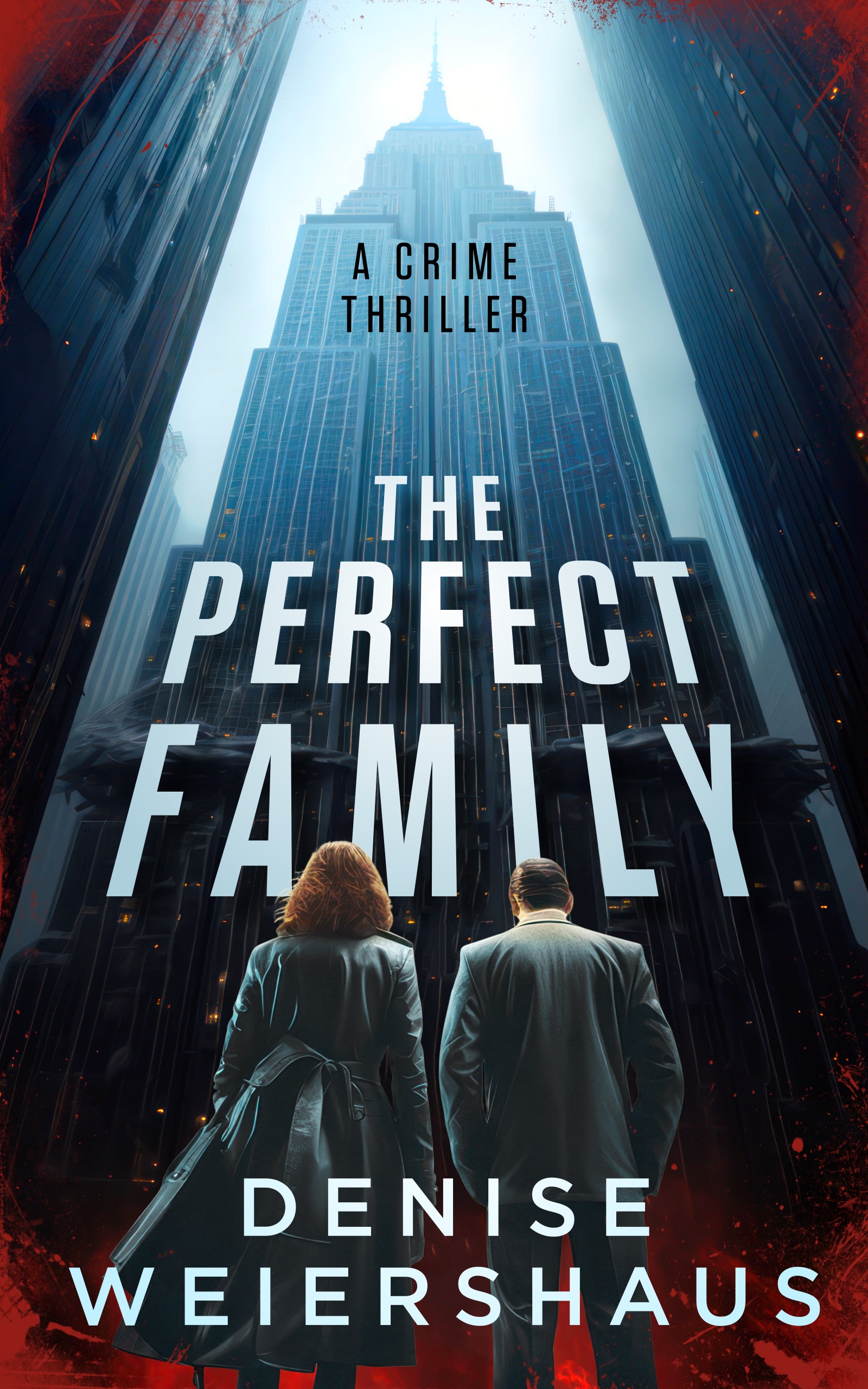
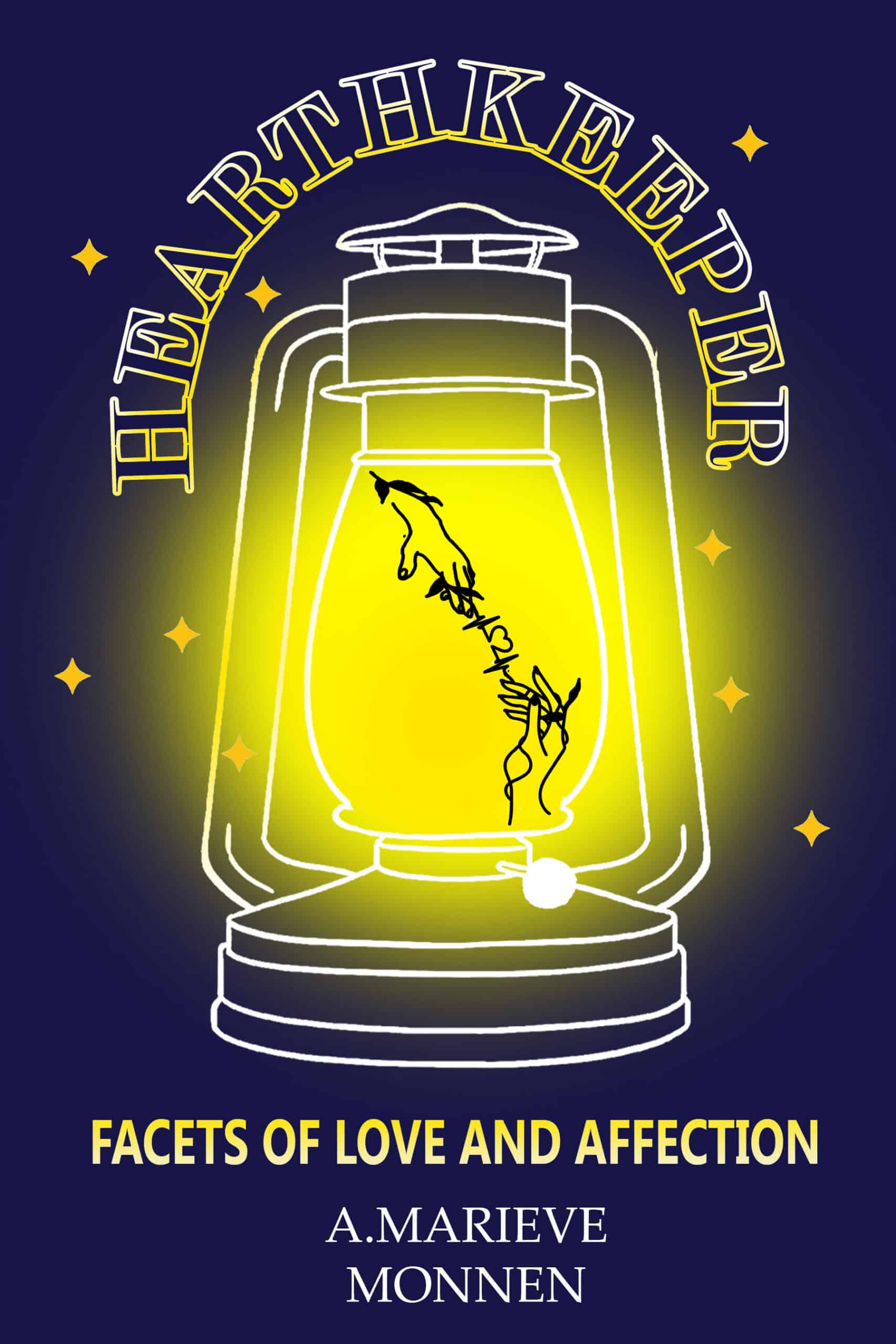
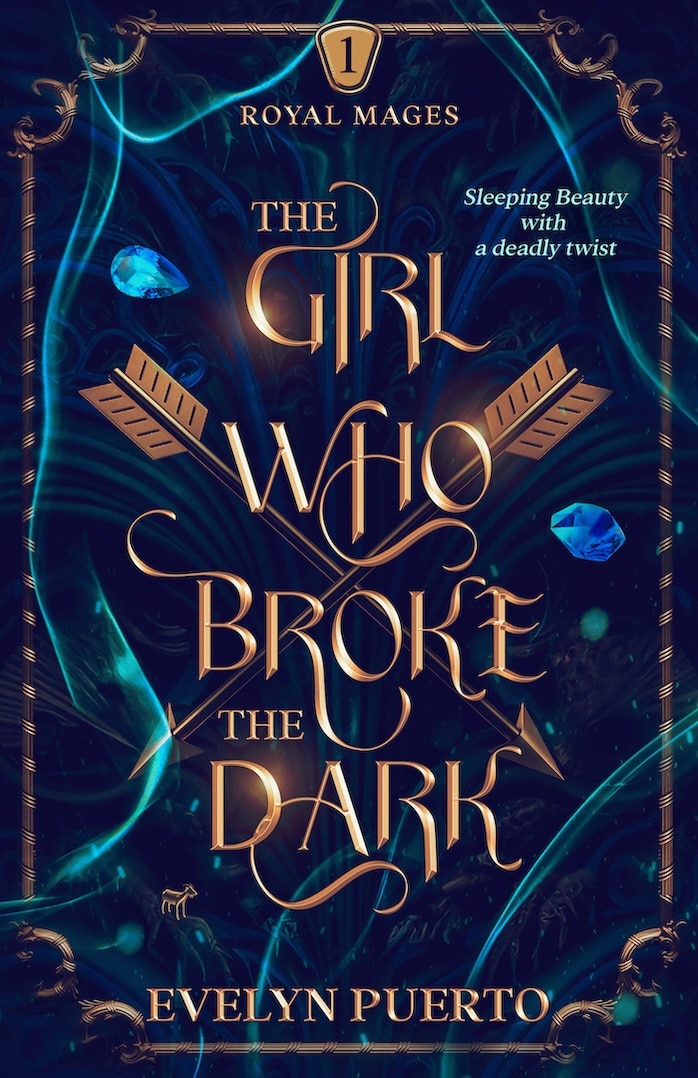
Impressive information, especially the part of avoiding or getting through a writer’s block. This will definitely help a lot of writers out there.
I tried pansting from the beginning. Got to a for in the road and the story would peter out. Read all kinds of “pre-writing” advice, tried it, realized it was just enabling my procrastination. What finally got my word-counts over 40K was to stop trying to write linearly and trust that most of my scenes will eventually connect. Of my current WIP, I’d say only about 20% of the scenes were (fuzzily) plotted, the other 80% either came out of telling my muse to “write SOMETHING that fits in this book” or thinking about a just-written scene and wondering what happened before or after it.